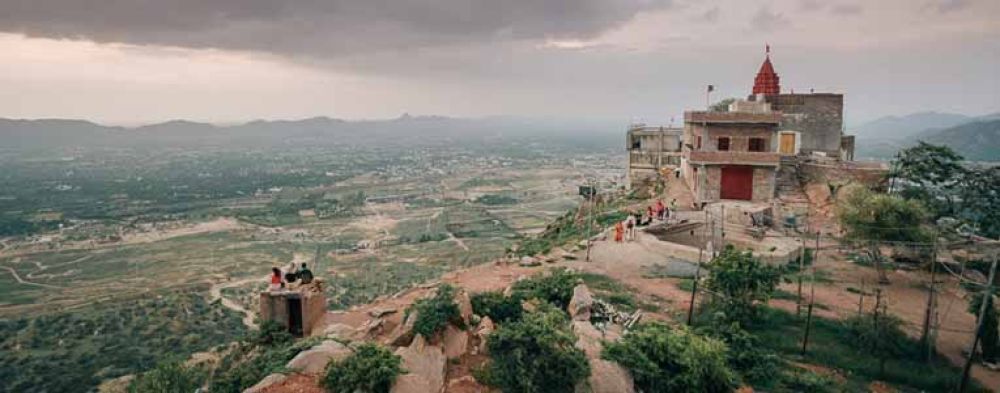

Pushkar, a small pilgrimage town in Rajasthan, India, is one of the oldest cities in the country with a history that spans millennia. It is known for its sacredness, unique culture, and the rare Brahma Temple. Among various spiritual spots, the Savitri Temple stands out as a significant destination for tourists and devotees alike.
The Savitri Temple is dedicated to Goddess Savitri, the wife of Lord Brahma, the creator of the universe according to Hindu mythology. The temple is situated on a hillock behind the Brahma Temple and offers panoramic views of the surrounding lake and landscapes. The history of the temple is intertwined with the legendary account of Brahma performing a yagna (ritual sacrifice) in Pushkar. It is said that to perform the yagna smoothly, Brahma needed his wife Savitri to be present, but when she was late, he married a local girl named Gayatri to complete the yagna. Aggravated by this, Savitri cursed Brahma that he would be worshiped only in Pushkar and took her seat on the hilltop, which is now known as the site of the Savitri Temple.
Tourism in Pushkar, including visits to the Savitri Temple, has a historical lineage that dates back several centuries, but it has gained substantial international prominence over the last few decades. The town attracts thousands of visitors during the annual Pushkar Camel Fair, usually held in November, which is considered one of the largest camel and livestock fairs in the world. However, the nature of tourism in Pushkar is primarily spiritual and cultural, with pilgrims visiting the town throughout the year.
Traditionally, reaching the Savitri Temple required a hike up the hill, which was both a physical endeavor and a spiritual exercise. However, with the development of tourism infrastructure, a cable car system has been installed, which now conveniently takes people up the hill. This has considerably increased the temple's accessibility to senior citizens, differently-abled visitors, and those short on time.
As you reach the temple after the ascent, visitors are greeted with breathtaking sunrise views that are especially magnificent during the early hours of dawn. It is believed that watching the sunrise from the hilltop alongside a visit to the temple has a spiritual significance, symbolizing an awakening and the beginning of life.
The trend in tourism in Pushkar is leaning towards sustainable and responsible travel. There has been a growing consciousness to respect the sacred environment and promote eco-friendly practices. Boutique homestays, heritage hotels, and community-involved tourism are gaining popularity. Tourists are becoming more engaged in local customs, cuisine, and traditional festivals, which helps support the local economy and conserve the area's cultural heritage.
The history of tourism at the Savitri Temple Pushkar may not be well-documented, but the essence of its spiritual significance has remained unchanged. Today, the temple is not just a site of religious importance but also a spot that offers a serene escape and a viewpoint that provides visitors with a profound sense of peace and connection with history.